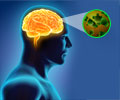Scientists at Stanford University School of Medicine have found that genomic switches can predispose an individual to one set of autoimmune disorders
Scientists at Stanford University School of Medicine have found that genomic switches can predispose an individual to one set of autoimmune disorders but protect the same person against another set.
"Maybe we should stop considering all autoimmune diseases in one lumped category," said Atul Butte, MD, PhD, assistant professor of pediatrics and of biomedical informatics and director of the Center for Pediatric Bioinformatics at Lucile Packard Children's Hospital. "It looks as if there may be at least two different kinds."Pairs of autoimmune diseases have been linked in clinical practice, Butte said. People with type-1 diabetes are routinely screened for autoimmune thyroid disease, for which they are known to be at heightened risk. But no one has ever known why.
A study to be published online Dec. 24 in PLoS-Genetics provides a genetic basis for this clustering effect, while extending it to show how two such clusters tend to be mutually exclusive. Butte, who is the study's senior author, and his colleagues looked at data from several large genome-wide association studies of single-nucleotide polymorphisms, or SNPs: tiny genomic variations that constitute the genetic underpinning for inter-individual human differences from eye color to nose shape to personality quirks.
The human genome can be thought of as a 3-billion-unit-long sequence, with each unit consisting of one of four different chemical residues. At almost every specific location along two different people's genomes, the resident chemical unit is the same. But at about one or two out of every 1,000 positions, the first person's genome may boast one variety of chemical unit, while the second's hosts another type. This single-unit difference is a SNP (pronounced "snip").
There are several million SNPs in the human genome, making for a gigantic number of possible different versions of a human being, said the study's lead author, Marina Sirota, a fourth-year PhD student under Butte's supervision in Stanford's Biomedical Informatics Program. In so-called genome-wide association studies, SNPs linked to disease susceptibility are found by assessing genomes from two large groups of people, one composed of patients with, say, rheumatoid arthritis or heart disease and another of people without the condition. If, at a given SNP location, the frequency of one particular chemical unit is significantly greater or smaller among the diseased people than in the healthy ones, that SNP is presumed to lie close to or within a biologically important genomic region that increases or diminishes genetic susceptibility to the disease, Sirota said.
In the past few years the industrial-scale characterization of SNPs has been hugely enhanced by sophisticated electronic devices called gene chips, pioneered at Stanford about a decade ago. Gene chips can quickly scan an individual's genome to identify the chemical unit occupying each of more than a million SNP locations.
Advertisement
That worked out to 573 SNPs. Of those, the researchers found 15 SNPs for which having a particular chemical unit at that site predisposed an individual to several autoimmune diseases.
Advertisement
For instance, a particular chemical unit at a SNP site shown to predispose people to multiple sclerosis also rendered them, as a group, more likely to have autoimmune thyroid disease, while the alternative chemical unit at the same site predisposed them to rheumatoid arthritis and ankylosing spondylitis. Most intriguing of all, people predisposed to one pair of diseases were protected against the other.
The scenario is akin to switches controlling banks of Christmas-tree lights. In addition to a master on/off switch that determines whether electricity (a general predisposition to autoimmune disease) will flow through the circuit, a second set of toggle switches determines whether, say, red or blue lights (one versus another autoimmune-disease cluster) will be on.
"As more genomic information becomes available on increasingly advanced platforms, this sort of analysis can be done on more diseases, possibly hundreds of them. Plus, the original set of 573 common SNPs we were able to inspect will grow much larger. So we'll be able to find more relationships like these," Sirota said.
Butte said finding SNPs predisposing people to one or another cluster of autoimmune diseases may help catch the onset of a disease earlier. "And if a patient has a particular autoimmune disease, this might help us know what else to screen that patient for, or guess whether a drug that works well in a different autoimmune disorder could be useful in treating this patient."
It might also help guide drug development, he added. "Several of these nine interesting SNPs we've found are located in or near genes that code for molecules found on cell surfaces, which makes them potentially easier targets for the drugs pharmaceutical researchers are best at producing."
Source-Eurekalert
RAS















